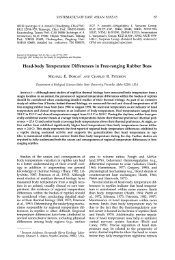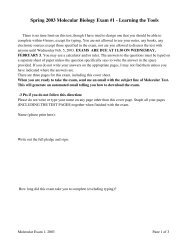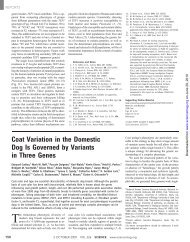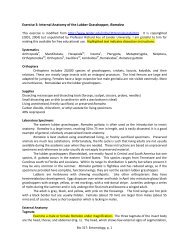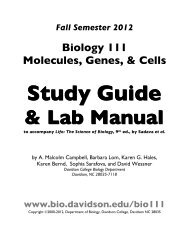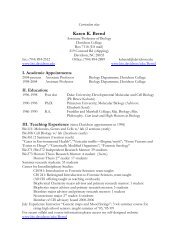Davidson College Department of Biology Honors Thesis Title ...
Davidson College Department of Biology Honors Thesis Title ...
Davidson College Department of Biology Honors Thesis Title ...
You also want an ePaper? Increase the reach of your titles
YUMPU automatically turns print PDFs into web optimized ePapers that Google loves.
observed GFP fluorescence (Figure 25). The Lux Receiver showed induction by both 3OC12<br />
and 3OC6, while the Las Receiver was never activated. It should be noted that the Las<br />
Receiver has never been shown to function under any circumstances, so these results should<br />
be interpreted cautiously. Expression <strong>of</strong> the Lux Receiver was also more than 4 times greater<br />
when activated than was pLas’ (note the difference in the scale <strong>of</strong> the y-axis between Figs<br />
23 and 25).<br />
(a) Lux Receiver<br />
(b) Las Receiver<br />
Figure 24: Design <strong>of</strong> the Lux Receiver (top) and Las Receiver (bottom). Receivers are designed to<br />
fluoresce when exposed to the proper autoinducer molecule.<br />
I performed a final fluorescence experiment to verify that cells expressing LuxI and LasI were<br />
able to make and secrete their respective autoinducer molecule. To do this, I compared the<br />
GFP response <strong>of</strong> the Lux Receiver to autoinducer inducer inputs from two sources: purified<br />
autoinducer (AHL) and AHL sender cells (Figure 26). Sender cells contained previously<br />
constructed parts (S03608 and K091136) that constitutively expressed either LuxI or LasI.<br />
It was expected that these cells could synthesize AHL molecules that would be secreted<br />
into the media and absorbed by the Lux Receiver cells. My results showed that while the<br />
Lux Receiver’s response to purified AHL was much more robust than the response to the<br />
sender cells, all autoinducer sources produced some type <strong>of</strong> increase in fluorescence. Again,<br />
we observed cross-reactivity between 3OC12 and the lux system. These results suggest that<br />
both the Las Sender and Lux Sender are functional to some extent.<br />
32



